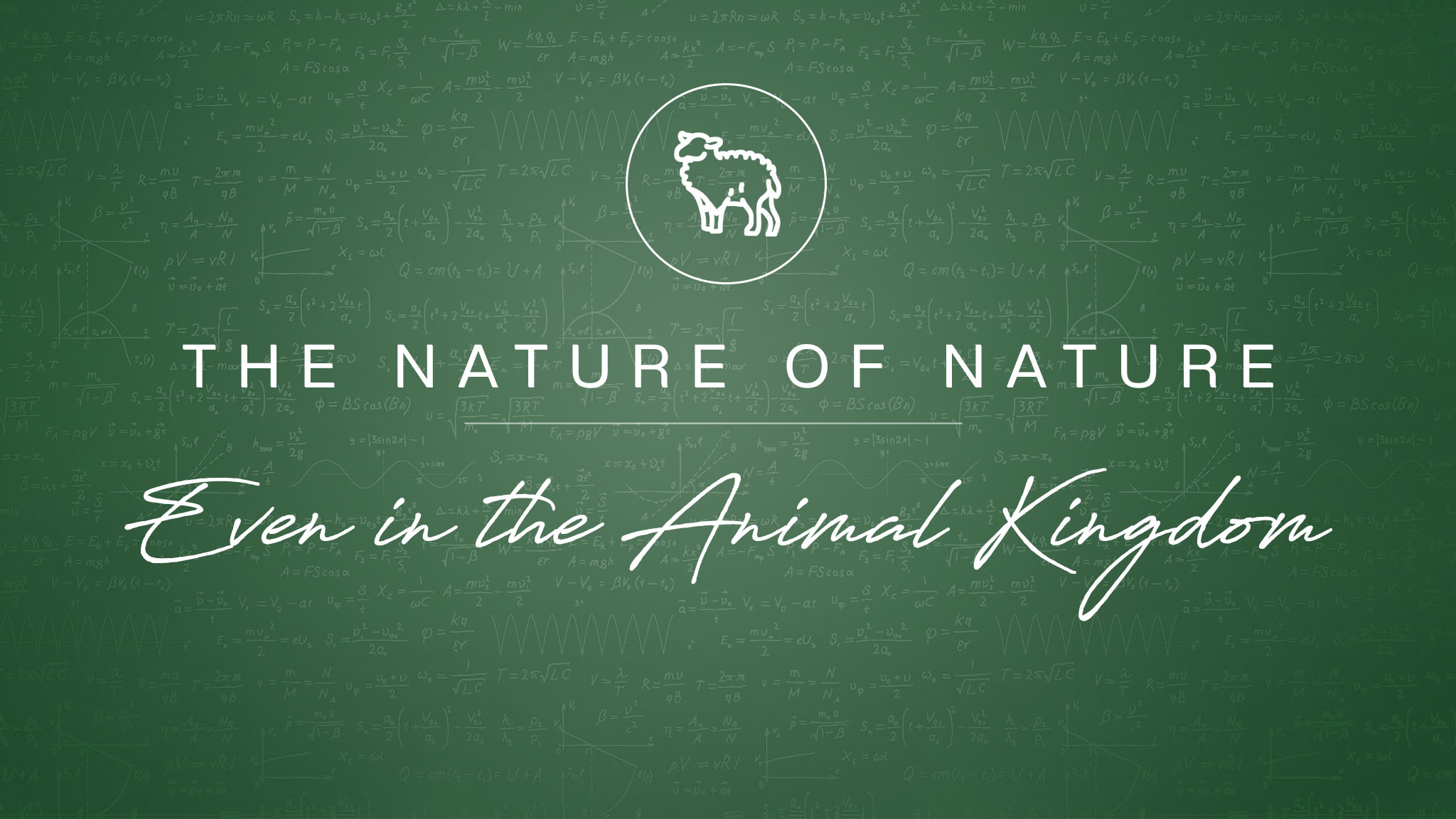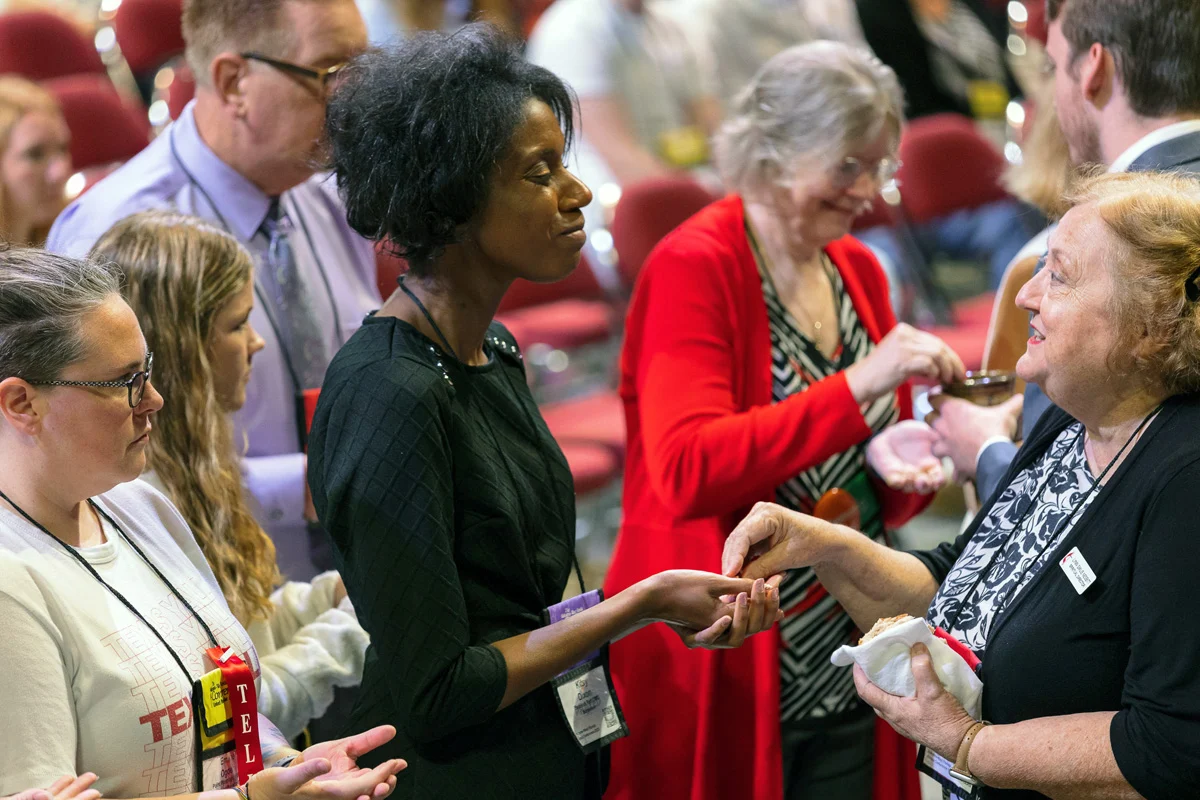Note: this is a four-part blog series that I hope can shed some light on God’s creation – animals, humans, and the societies we’ve lived in – and how we are perfectly designed as He intended.
If you’d like to check out the rest of the posts in the series, follow the links below:
Overview
Part 1: The Divine Blueprint
Part 2: Even in the Animal Kingdom
Part 3: (coming soon)
Part 4: (coming soon)
In my previous post in this series, I shared my thoughts about DNA and how our DNA is part of God’s divine blueprint for all of His creation.
I discussed how DNA is designed to be adaptable over time and how I believe that God intends to allow nature to do its thing and continue to thrive.
And I shared my thoughts about how our DNA – as a result of actual scientific studies and research – has been shown to play a key role in sexual preference and gender identity.
As a reminder – the whole reason that I’m sharing all of this about the “nature of nature” with regard to sexuality and gender is due to the fact that the UMC has outlined a way for churches to disaffiliate from the UMC and it is rooted in human sexuality.
A specifically-added paragraph to our Book of Discipline titled “Disaffiliation of a Local Church Over Issues Related to Human Sexuality” outlines the process churches can use to disaffiliate by December 31st, 2023. The language of this paragraph does not address differences in control over pastors or the unfounded worry about creeds being changed or the Lord’s Prayer being said differently (yes, these are actual rumors currently being spread seemingly to create doubt in churches about the UMC).
We’re having to engage in a debate about whether we fully welcome committed people of the same sex loving one another as part of the greater story of the path to eternal salvation.
Sex has awkwardly and unfortunately become our denomination’s focus.
But back to this series.
We know that DNA plays a key role in sexual preferences and gender identity. Science hasn’t found a “gay gene” yet, nor one that definitively and exclusively determines what a person feels is their gender identity. But science has indicated that our core design can determine how environmental factors play into our sexual preferences and identity.
So if DNA plays a part in that, shouldn’t all creatures with DNA have the possibility to experience something other than what’s considered sexually “typical” in their social groupings?
This raises the question: is homosexuality a uniquely human phenomenon, or is it a natural occurrence in the animal kingdom as well?
Spoiler alert: same-sex behaviors do, in fact, appear in the animal kingdom too.
I’m definitely not implying that our LGBTQ+ siblings are akin to animals because I’m relating the two. But I’m asking the reader to consider that if we’ve seen even just a few examples of animal species that exhibit these traits, maybe humans aren’t all that different.
Keep in mind, that 2022 polling from Gallup revealed that the LGBTQ+ population makes up about 7% of the overall population. So again, even if we find a similarly small percentage in the animal kingdom, it definitely should cause a logical thinker to consider the possibilities for human wiring to be similar.
But in this post, we’ll explore some examples of same-sex behaviors and even biological sex adaptations that happen in the animal world, look at possible explanations, and consider how this might let us view our LGBTQ+ siblings through a more accepting lens.
The Same-Sex Behaviors of God’s Creatures
Same-sex behavior has been observed in a wide range of animal species, from primates and dolphins to birds and insects.
Let’s look at a few examples of the observations that have been made in various animal species.
Dolphins Have Same-Sex Relationships
Both male and female dolphins have been observed engaging in same-sex behaviors. Multiple research teams have observed this behavior in social groups of dolphins around the globe. Some research shows it as a frequent occurrence among some dolphins in social groups, while other dolphins do not exhibit the behavior at all. Research from 1997 indicated that about 15% of male dolphins and 5% of female dolphins engaged in same-sex behavior during the study.
Bonobo Monkeys Have Same-Sex Relationships
Bobobos are a species of ape found in Africa. While often compared with chimpanzees, they have unique social and sexual behaviors that separate them from chimpanzees.
Male-male sexual behavior is common in bonobos. Female-female sexual behavior is also observed but is less common than male-male behavior. In some cases, bonobos have been observed engaging in sexual behavior with individuals of both sexes.
Penguins Have Same-Sex Relationships
Both male-male and female-female relationships have been observed in multiple species of penguins.
In Magellanic penguins, both male-male and female-female pairs have been observed engaging in various courtship and mating behaviors. One study showed that up to one-third of all penguin couples in certain populations are homosexual.
Interestingly, the study showed that same-sex pairs were found to be just as successful at raising chicks as heterosexual pairs, and in some cases were even more successful.
One male-male couple in captivity even tried to incubate a rock together since they had no egg; zoo officials ended up giving them an actual egg to hatch. The story of the relationship and the new hatchling was even made into a children’s book — “And Tango Makes Three”
Bison Have Same-Sex Relationships
Relationships between male and female pairs of the American Bison have been observed. During mating season, male-male sexual activities may happen multiple times per day. Data shows that in young male bison, up to 55% of sexual activity occurs with other males.
Albatrosses Have Same-Sex Relationships
Both Laysan and Black-footed species of albatross have been observed in same-sex relationships. Same-sex pairs may engage in courtship displays, such as preening, bill fencing, and mutual preening, which are typically reserved for opposite-sex pairs during the breeding season.
In some cases, same-sex pairs may also engage in nesting behaviors, such as building a nest together, incubating an egg, or raising a chick.
Swans Have Same-Sex Relationships
Same-sex pairing has been documented in several species of swans, including mute swans and black swans. Same-sex swan pairs may engage in courtship displays and may also build a nest and defend a territory. In some cases, same-sex pairs may even adopt and raise young, although this is less common than in opposite-sex pairs.
Biological Sex in God’s Creation
Our biological sexes are part of God’s design for reproduction in His creation. In the simplest terms, when we refer to biological sex, we mean “male parts” and “female parts”.
Most animals are of one biological sex or the other. They’re either male or female.
Some creatures have both and can reproduce without another member of their species. But biologically, they have both reproductive functions within them. The animal kingdom still mostly needs “two sides to the equation” to reproduce, so to speak.
But even in nature, biological sex isn’t always a predetermined path for creatures.
Some animals can actually change sexes and do so in order to ensure the continuation of their species.
Let’s think about that – God intentionally designed some creatures in His Creation to change their sexual roles in order for the beauty of nature to continue.
Here are a few examples of animals that make these biological sex changes within their lives:
Clownfish Can Change Sexes
Some types of clownfish (think of the orange and white striped fish from the movie “Finding Nemo”) are all born as males but have the ability to change into females based on situations in their environment.
Typically, clownfish live in social settings with a dominant female and several males, with one being dominant.
If the dominant female dies, the dominant male will actually turn into a female over a period of several weeks to months. The male develops female reproductive organs and the male reproductive organs eventually disappear.
Lobsters Can Change Sexes
The American Lobster can change sex based on its opportunities for reproduction. Male lobsters can change to females if not enough females are found to mate with.
Sea Turtle Sexes are Determined by Temperature
Sea turtles (and many reptiles) are born either male or female as a result of the temperature of the eggs during the incubation period. A mere six degrees difference changes the sex of a sea turtle within its egg. Warmer incubation temperatures produce females and cooler temperatures produce males.
Animals and…”Lifestyle Choice”?
Animals have but a few single purposes in life. They hunt and eat to survive and they reproduce and provide for their young. They do whatever they need to in order for this cycle to continue.
What we see in the previous examples is that same-sex pairing and behavior are a natural and normal part of the diversity of sexual behavior in the animal kingdom.
There is no consensus on a single explanation for same-sex behavior in animals, and it’s likely that a combination of factors contributes to it. Scientists theorize that same-sex behaviors in animals could just be part of the social bonding process or even a self-imposed way to control population size.
One of the worst things for an animal in a herd or social group is to be isolated within its population. And when you see the data showing the percentages of the various animal species that exhibit same-sex behavior, on average, they’re relatively small.
Animals wouldn’t likely choose to be something that puts them in a small percentage of their social groups. They don’t do things intentionally that will alienate them or lessen the opportunity for them to thrive and reproduce. They won’t make choices or participate in behaviors that would create a challenge for their survival.
Additionally, if we assumed that all of these animals were simply “choosing” same-sex behaviors, wouldn’t we see natural selection weed that out? Over the millions of years that Earth has existed, wouldn’t that “errant lifestyle behavior” be gone by now because they wouldn’t be reproducing? It seems that this behavior is actually just part of these species and part of the reason that they’ve survived for so long.
Animals aren’t choosing to act in homosexual ways or choosing to switch biological sexes.
They’re just being the creatures that God designed.
Yes, We Accept that Animals Do Things that Humans Don’t, Though
Now, one could argue that animals kill one another and that this could be considered “by design” too.
We all probably can agree, though, that animals don’t kill other animals “just because”. They hunt for food. They battle and injure one another for territory rights and subsequent mating opportunities.
There is a purpose there that goes with natural design.
Yet we frown upon humans killing other humans and would deem that a “sin”.
But sin, itself, isn’t something that can exist on its own. Sin only exists as a thing in comparison to some set of beliefs. Some religions may categorize acts as sin differently from Christians.
When I look at what we understand about the New Covenant and what Jesus taught us was important to Him, I see guidance that seeks to keep God’s children from harming one another or turning away from a life with God.
In society as we know it, killing another human goes against this notion of “doing no harm”. That’s how society works — we all agree on the rules and the consequences of breaking them. That’s our baseline agreement for us to function as a society.
As Christians, we know taking the life of another human deprives another person of the opportunity to fully know Christ and to be His hands and feet here on Earth. It deprives God of the opportunity to reach out and let the Holy Spirit fill them.
Thus, the “killing” comparison of the two kingdoms – animal and human – seems hardly fitting in the context of Jesus’ teachings in this situation.
It seems silly to even bring that up, but I felt it was at least worth addressing.
The Takeaway
I wish there were a greater focus on the message of the Bible and what it means, rather than how it’s written.
I’ve heard so much fundamentalist objection to same-sex relationships and clergy in the UMC based around the statement that “the Bible says it’s a sin”.
But here’s what we know.
A small percentage of some species of the animal kingdom have same-sex relationships.
A small percentage of the human population also lives in same-sex relationships.
Some species change their biological sexes due to conditions in their social groups or even before they are born.
A small percentage of the human population has a feeling from childhood that maybe the biological sex that they are born with could be something different that what they feel.
Both these observations in the animal kingdom and years of animal research on a variety of species challenge the notion that concepts like homosexuality are unnatural or abnormal and instead suggest that they are a normal aspect of human sexuality just as it is with other creatures.
By recognizing the existence of same-sex behavior in animals, we can better appreciate the complexity and richness of the natural world that God has created, and work towards creating greater inclusion and acceptance for all individuals, regardless of their sexual orientations or gender identities.
Are you asking questions? Are you digging deeper? Are you looking for context?
And are you looking for clues in the rest of God’s creation?
Because it’s a pretty beautiful and wonderful place.
And I’m glad that the Ark was plenty big for all of it.






